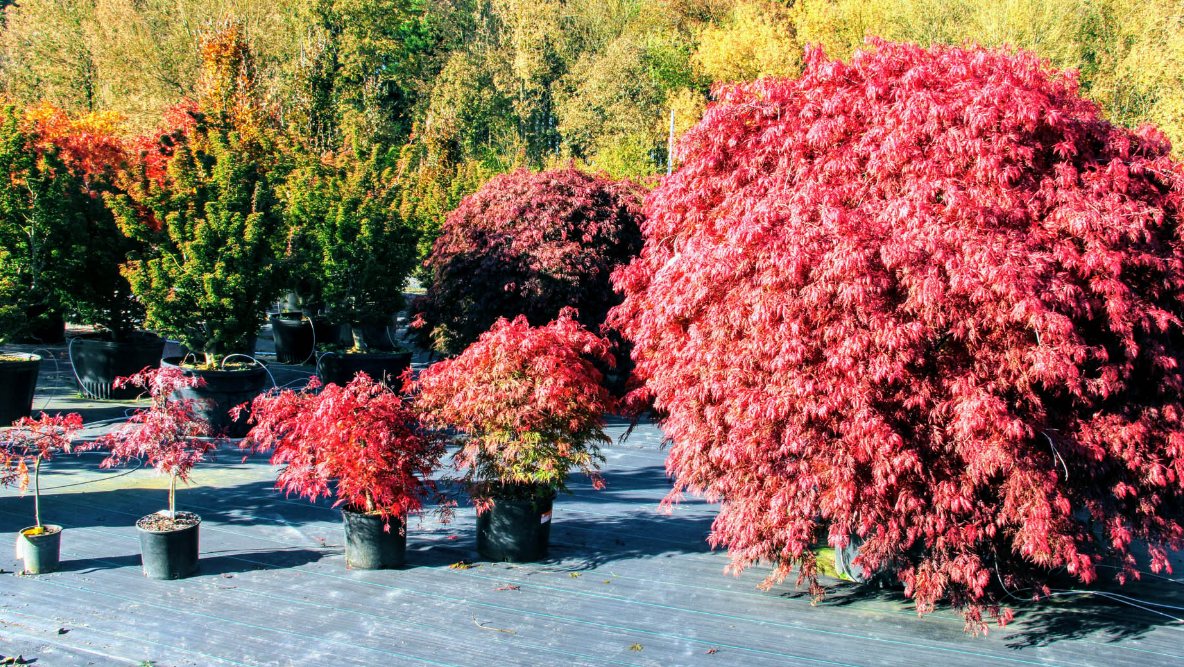Orangeola Japanese Maple: Nature's Living Work of Art
Japanese maples (Acer palmatum) are renowned for their exquisite beauty, but among the many captivating varieties, the Orangeola Japanese Maple (Acer palmatum dissectum 'Orangeola') stands out as a living masterpiece. In this blog, we'll explore the enchanting features, care guidelines, and the enduring allure that the Orangeola Japanese Maple brings to your garden.
The Captivating World of Orangeola Japanese Maple
The Orangeola Japanese Maple, scientifically known as Acer palmatum dissectum 'Orangeola,' is a deciduous tree celebrated for its unique and elegant form. This variety is a laceleaf or dissectum maple, known for its finely dissected leaves, cascading branches, and mesmerizing orange-red hues. Its delicate appearance and striking foliage make it a standout choice for garden enthusiasts and landscape designers alike.
Foliage and Color
One of the most captivating features of the Orangeola Japanese Maple is its exquisite foliage. In spring, the leaves emerge in a bright green hue, creating a refreshing and vibrant start to the growing season. As summer progresses, the leaves maintain their charm, providing a lush and tranquil backdrop. However, it's in the fall that the Orangeola Japanese Maple truly shines. The leaves transform into a breathtaking display of orange and red, casting a spell of enchantment over your garden.
Caring for Orangeola Japanese Maple
Proper care is essential to ensure your Orangeola Japanese Maple thrives and continues to bring beauty to your garden. Here are some key care guidelines:
1. Sunlight: Plant your Orangeola Japanese Maple in a location with partial shade to dappled sunlight. While it can tolerate morning sun, it's crucial to protect it from intense afternoon sunlight, which can scorch its delicate leaves.
2. Soil: Well-drained, slightly acidic soil is ideal for this maple. Amending the soil with organic matter can promote growth and overall health.
3. Water: These trees prefer consistently moist soil. Regular watering is vital, especially during dry spells and hot summers.
4. Pruning: Prune your Orangeola Japanese Maple minimally, primarily to maintain its elegant form and remove any dead or crossing branches. Pruning is best done during late winter or early spring before new growth begins.
5. Fertilization: Use a balanced, slow-release fertilizer in early spring to provide the necessary nutrients. Avoid over-fertilization, which can harm the tree.
Year-Round Beauty in Your Garden
One of the most remarkable attributes of the Orangeola Japanese Maple is its year-round beauty. While its vibrant orange-red foliage steals the spotlight in the fall, its finely dissected leaves provide an elegant backdrop in the spring and summer. Even in winter, the tree's intricate branches and delicate form continue to add visual interest to your garden.
Conclusion
The Orangeola Japanese Maple is a living work of art that captivates the eye and heart. Its striking foliage, delicate form, and year-round allure make it a must-have for garden enthusiasts who appreciate the beauty of Japanese maples. Whether you plant it as a standalone specimen, incorporate it into a mixed border, or use it as a focal point, the Orangeola Japanese Maple promises to enhance your outdoor space with its unique charm and timeless allure.
Add the Orangeola Japanese Maple to your garden, and let it infuse your outdoor space with the elegance and grace that only nature's living masterpieces can provide. Whether you're an experienced gardener or just starting on your gardening journey, this living work of art will undoubtedly make your landscape shine with its vibrant beauty and enduring allure.




Comments
Post a Comment